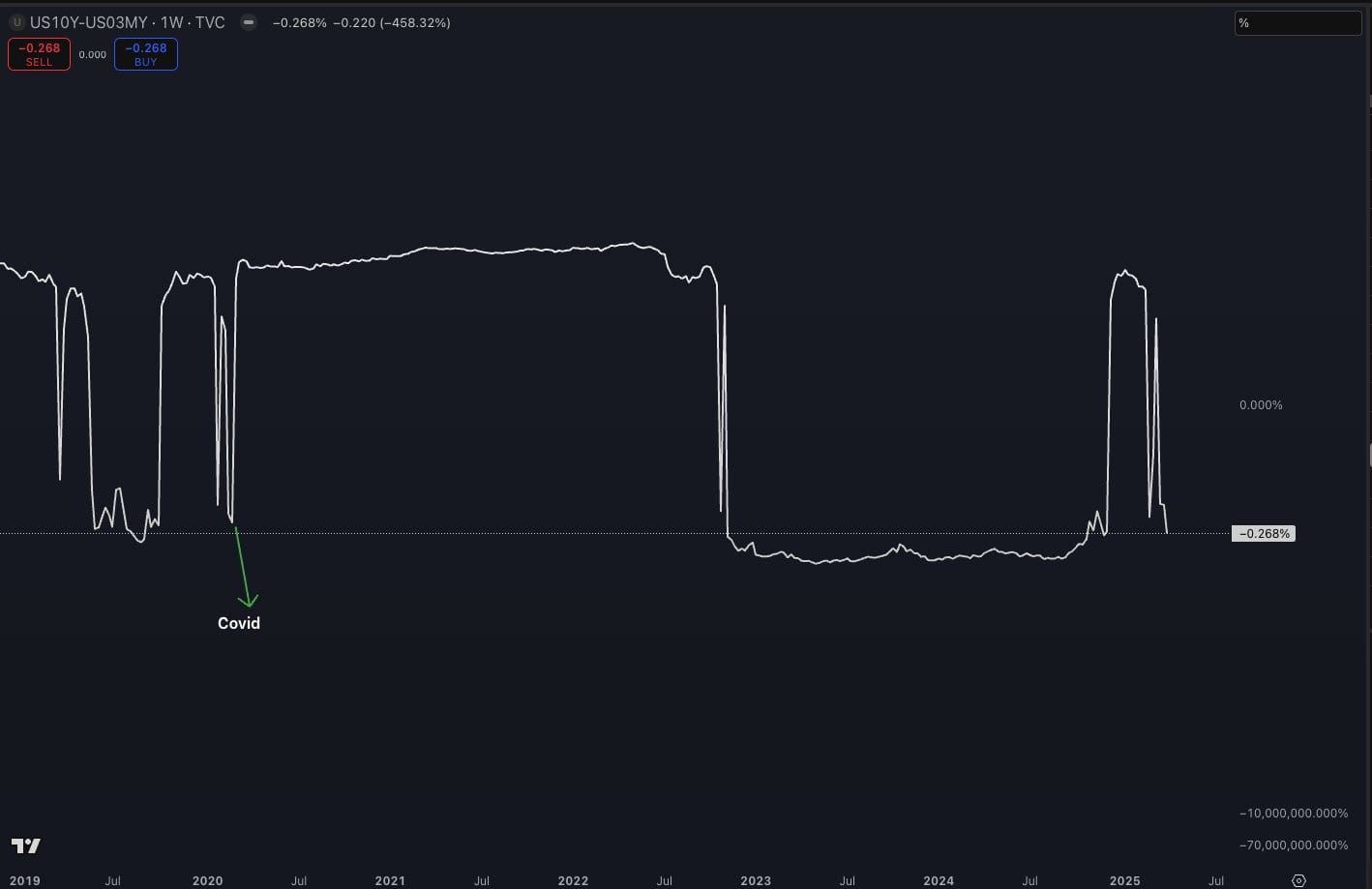There’s an unsettling familiarity in the current macro setup. Velocity of money remains depressed, liquidity is still circulating, and structural pressures are rising. From tariffs to inverted yield curves, the signs resemble what we saw just before the 2020 market dislocation. The difference this time? Everyone's watching the Fed — but no one agrees on what their next move means.
Liquidity Is Plentiful, but Velocity Is Dead
Despite a market narrative focused on tightening, liquidity hasn’t fully dried up. But that’s not the real issue — velocity of money is. The rate at which money moves through the system is historically low, just as it was in early 2020. Back then, capital was available, but it wasn’t circulating with confidence.
Now, add in renewed macro pressure: tariff talk resurfacing, yield curve inversion lingering, and a fragile global growth outlook. The market isn’t panicking — yet. But it is preparing. Whether it’s bracing for a dovish pivot or another fracture remains to be seen.
The Fed’s Timing Is Critical — and Risky
If the Fed cuts rates into this environment, there are two clear scenarios — and neither guarantees a soft landing.
Scenario one: capital rotates aggressively into risk. Bitcoin surges. Growth stocks rebound. The market breathes a sigh of relief and liquidity drives prices higher.
Scenario two: the Fed acts too late. By the time they respond, the damage is done. A deflationary shock takes hold, confidence disappears, and what follows resembles the chaos of March 2020 — sharp, violent, and largely unexpected by consensus models.
This is the tightrope. The policy lag is real. If they misjudge timing, the reaction could be severe.

The Bond Market Isn’t Guessing — It’s Warning
The yield curve isn’t just a quirky line on a chart — it’s the bond market’s message to policymakers. And right now, the message is blunt: growth is slowing, tariffs are a headwind, and policy is behind the curve.
Inversion of the yield curve — where short-term rates exceed long-term — has a long track record as a recession signal. The bond market is already pricing in expectations that things are breaking beneath the surface, even if equities haven’t yet caught up.

This isn’t about watching for the Fed’s next move. It’s about acknowledging what’s already priced into the system. Delays carry consequences.
Conclusion
Markets don’t repeat perfectly — but they do rhyme. The setup we’re seeing now echoes the conditions that preceded one of the fastest sell-offs in history. Whether this ends with a breakout or a breakdown depends less on data and more on timing — and right now, the clock is ticking.














Discussion